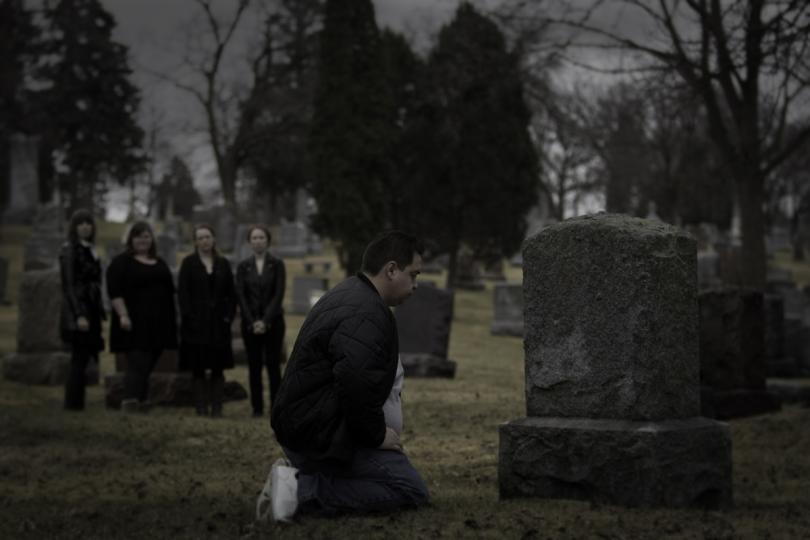Forward then back

The system is broken, and life after prison can be just as bleak for ex-inmates as it was inside. Nimbus’s new locally-set play, Redemption, looks into two parolee’s lives and those around them. A mix of present-day scenes and flashbacks, Josh Cragun’s script explores the long-term effects of incarceration on everything from the spirit to practical problems like renting a place.
Shawn is the first person we meet, sitting down with his new parole officer as he prepares to leave a Stillwater penitentiary after 14 years in prison. We follow Shawn through a move into his friend’s apartment, applying to and being rejected for jobs because of his record, and trying to make amends for what he did to be locked away. Intermittently, we see scenes in a south Minneapolis garden shop, where a young woman named Dee works with store owner Beth as she prepares to start classes at MCTC. We learn that both women have a back story related to the justice system: Dee’s mother is in prison and about to come out, and Beth’s husband was killed by someone who has recently been released.
Director Mitchell Frazier’s reflection on a timely subject had powerful performances, but the devices it used often got in the way of the story’s potential.
Trapped outside
Performed at nimbus’s new Crane Theater, the play painted an interesting picture of people navigating the outside world after years isolated from it. It was sometimes funny, sometimes moving. Grasping a flip phone, Shawn stares in amazement as he saves his first contact. In a tense reunion with her mom, Dee rips up the old picture that her mother coveted, possibly forgetting her daughter was a woman now, and not a little girl at the zoo. And, after being fired from a job that finally gave him hope, Shawn reveals he’s thinking about finding a way back to prison because that is what society is setting him up to do anyway.
Most scenes would dip into flashbacks, a necessary part of the story that somehow did more harm than good. The characters having the flashbacks would stand onstage and monologue as other characters entered to act out the words they were saying. They seemed a bit unnecessary — if doing a flashback, why not add action that the dialogue does not already cover? Or not have the dialogue? While we’re at it, why not just cut the flashbacks and let the actors talk? Often enough, the actor talking would be the most meaningful part and the extra action just seemed to get in the way.
In the way of what? A handful of very good performances, especially from leads Ernest Briggs and Ashembaga Jaafaru, who made the play worth watching. As Shawn, Briggs was steady and natural, persisting though Shawn’s life, playing neither hero nor hopeless. Jaafaru’s Dee was outstanding all the way through. She embodied the tact of someone who does not need to hear how rough she had it but knows how to listen to it anyway; the awkwardness of crying in front of someone she doesn’t want to cry around.
These actors, and most of their supporting cast, redeemed the story’s shortfalls. The emotional moments they created illustrated incarceration’s far reach better than any flashbacks or projections pinpointing the time and date. At its core, the play it succeeded at giving an idea of this intricate issue and felt neither over-dramatized nor censored. And if more of the unnecessary elements had been stripped away, it could have gone farther.


